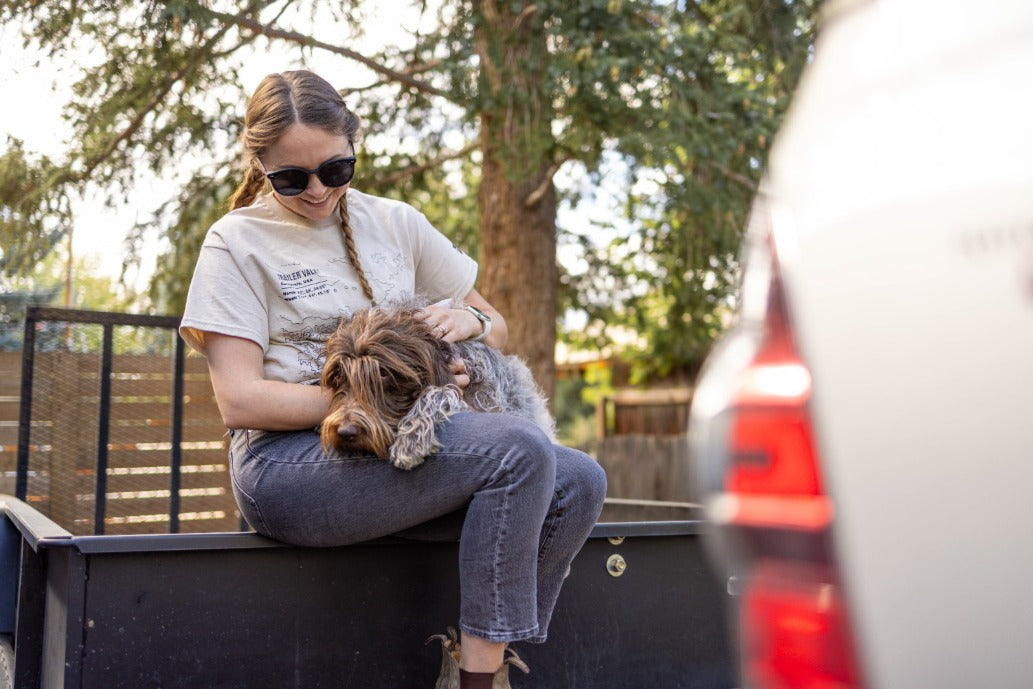Moving a trailer requires focus and precision. Add children and pets to the equation, and the complexity increases dramatically. A moment of inattention or a curious child stepping into a blind spot can result in serious injury.
Protecting your family and pets during trailer movement isn't complicated, but it does require intentional planning and consistent execution.
Why Trailer Movement Is Dangerous
Trailers create massive blind spots, areas completely invisible to anyone operating the tow vehicle. A child or pet in these zones is undetectable, and movement happens suddenly without warning.
Blind spots exist directly behind the trailer, along the sides, and at ground level where tires roll. Even slow-speed movement generates enough force to cause severe injury. A trailer rolling over a small foot or hand can cause crushing injuries.
During setup, people focus on positioning and unhitching, naturally reducing supervision of children and pets. They wander toward the trailer, exploring or playing, creating dangerous situations.
Creating Safe Zones
Establish Clear Boundaries
Define a physical perimeter where children and pets cannot go during any trailer movement. This might be inside the RV with the door closed, inside your tow vehicle with locked doors, or a designated area marked by cones or rope.
Explain boundaries clearly to children before arriving at new locations. Young children need supervision to respect boundaries, never rely on understanding alone.
Use Locked Spaces
The most reliable safe zone is a locked enclosure. Inside the RV with the door closed is ideal. Your tow vehicle with locked doors works if you're unhitching.
Physical barriers are the only reliable protection. Never rely on children or pets to maintain safety through understanding.
Assign a Safety Watcher
Designate one adult whose sole responsibility is watching children and pets during positioning. This person doesn't help position the trailer or connect hookups, they watch.
The safety watcher ensures children and pets stay in designated zones and don't wander into blind spots. This dedicated attention is the most effective prevention method.
Use Visual Markers
Brightly colored cones, rope, or tape create visual reminders of safe zones and exclusion areas. Place markers at least 15-20 feet from the trailer's furthest points during positioning to account for wheels and extended slides.
Operational Safety Practices
Do a Safety Walk-Around
Before any movement, walk completely around your trailer and tow vehicle. Look for children, pets, toys, or obstacles. Check blind spots from the driver's seat to verify your view.
Make this routine at every stop, even short ones. Children and pets appear suddenly.
Communicate Movement Plans
Tell everyone: children, pets' owners, and campsite neighbors when you're about to move your trailer. This warning gives people time to secure their children and pets and remain aware of movement activity.
Move Slowly and Deliberately
Slow movement gives you more control and provides time for reactions if unexpected obstacles or people appear. Never rush positioning, even if someone is waiting.
A few extra minutes of slow movement is infinitely safer than rushing and risking an accident.
Pet-Specific Safety
Keep Pets Confined During Movement
Pets can't understand trailer hazards or follow instructions. The safest approach is confinement inside the RV, vehicle, or secure enclosure during all movement, unhitching, and positioning.
Even well-trained pets can panic when they hear unfamiliar sounds or feel the trailer shift.
Use Secure Leashes
If pets must be outside during setup, use short leashes attached to fixed objects, never to the trailer or tow vehicle. Retractable leashes allow too much range and can tangle around wheels or undercarriage.
Prevent Escape During Arrivals
The most dangerous moment for pets is arriving at a new location. The door opens, excitement builds, and pets bolt into unfamiliar territory. Secure pets before any doors open.
Use travel crates, carriers, or have a designated person catch and restrain the pet immediately upon arrival.
Building a Safety Culture
Practice Procedures
Before your first trip, practice safety procedures at home or during short local trips. Have children understand and demonstrate following safe zone rules until procedures become automatic.
Familiarity prevents confusion when you actually need them to work.
Review at Each Stop
Remind everyone, children, pets, companions of safety procedures and designated zones at each new location. Consistent reminders create habits that persist even when circumstances change.
Never Compromise
There will be times when following safety procedures seems inconvenient. Don't compromise. One moment of "it'll be fine" is all it takes for tragedy.
The inconvenience of strict safety practices pales compared to the consequences of an accident.
Final Thoughts
With clear planning, designated safe zones, consistent practices, and dedicated supervision, you can eliminate almost all risk during trailer movement.
The key is making safety automatic rather than optional. When procedures become routine, they happen without thought and that consistency is what protects your family.
Your children and pets depend on you to anticipate hazards they can't understand. Create the systems that keep them safe at every stop.

